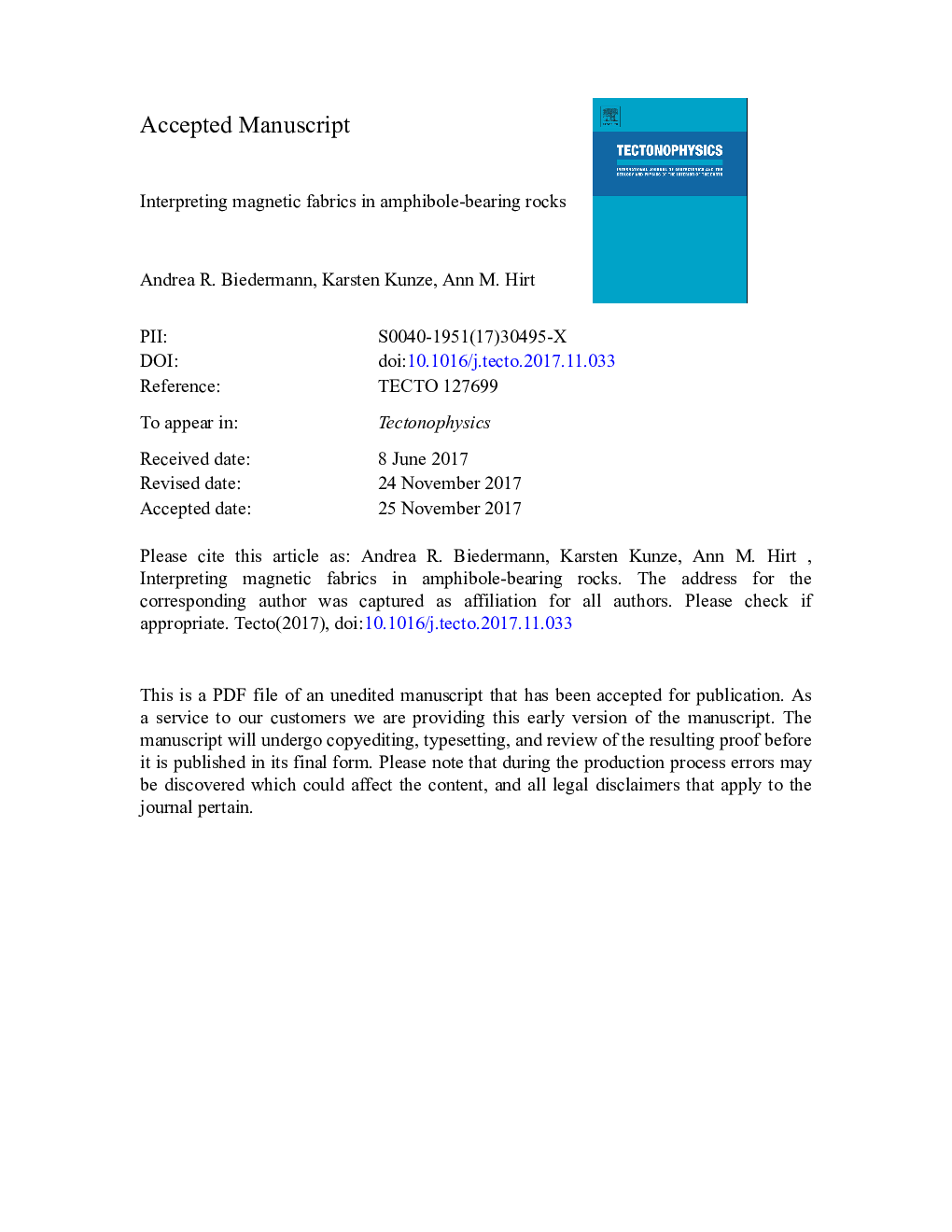| Article ID | Journal | Published Year | Pages | File Type |
|---|---|---|---|---|
| 8908842 | Tectonophysics | 2018 | 27 Pages |
Abstract
If amphibole is a major constituent in a rock, its magnetic fabric can be largely controlled by the crystallographic preferred orientation of amphibole. This study describes the (para)magnetic anisotropy in two amphibolites, both containing ca. 70% hornblende with rather strong crystallographic preferred orientation. Both amphibolites display a significant and well-defined anisotropy of magnetic susceptibility, with the minimum susceptibility approximately normal to foliation. However, in one amphibolite, the maximum susceptibility is parallel to the lineation, whereas in the other it is not. This seemingly inconsistent observation can be explained by the intrinsic susceptibility anisotropy of single crystals of hornblende, and their texture in the rocks. Numerical models show how the principal susceptibility axes relate to macroscopic foliation and lineation for point and fiber textures. This study underlines the potential of using magnetic anisotropy to obtain information about mineral fabrics in mafic rocks. At the same time, it highlights the necessity for taking into account single crystal properties of the mineral(s) responsible for the anisotropy and their crystallographic preferred orientation when interpreting magnetic fabrics.
Keywords
Related Topics
Physical Sciences and Engineering
Earth and Planetary Sciences
Earth-Surface Processes
Authors
Andrea R. Biedermann, Karsten Kunze, Ann M. Hirt,
